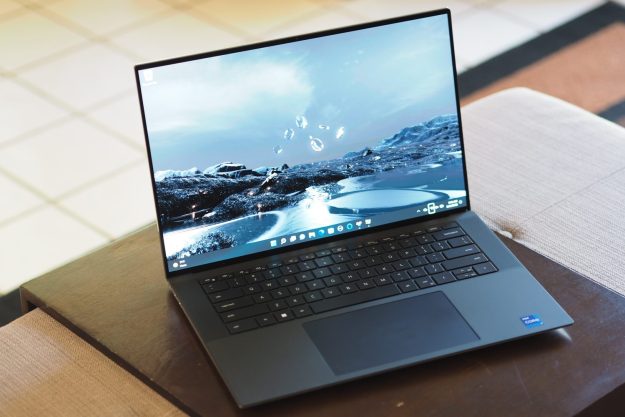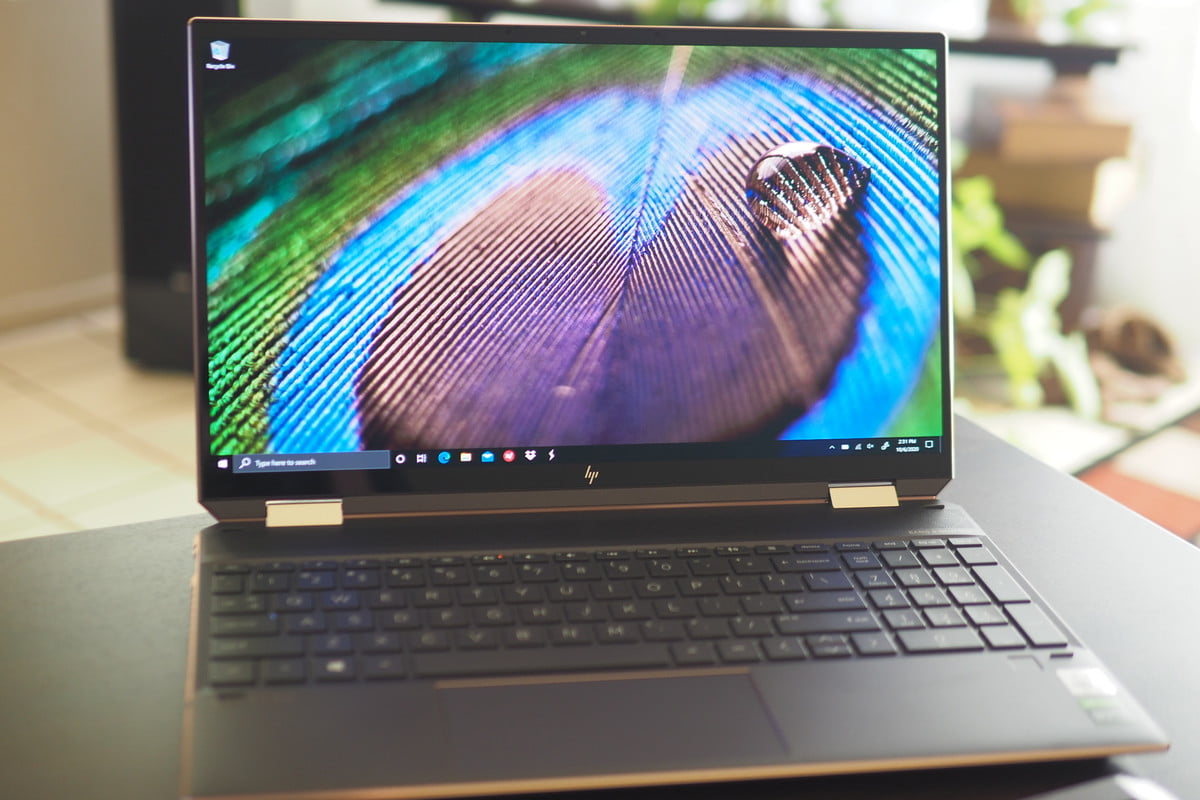
If you’re looking for a highly portable laptop, you’ll likely limit your search to 13-inch models. If you’re looking for more power, though, you’ll be taking a look at 15-inch laptops. Perhaps the best example is the Dell XPS 15, a popular laptop that packs powerful components into a relatively small chassis thanks to tiny display bezels.
Until now, you were mostly limited to traditional clamshell machines rather than the more flexible 2-in-1 form factor if performance was your primary need. That’s no longer true, with HP’s Spectre x360 15 adopting the same class of CPU and GPU as the XPS 15. Does this large 2-in-1 have what it takes to compete with Dell’s industry leader?
Design
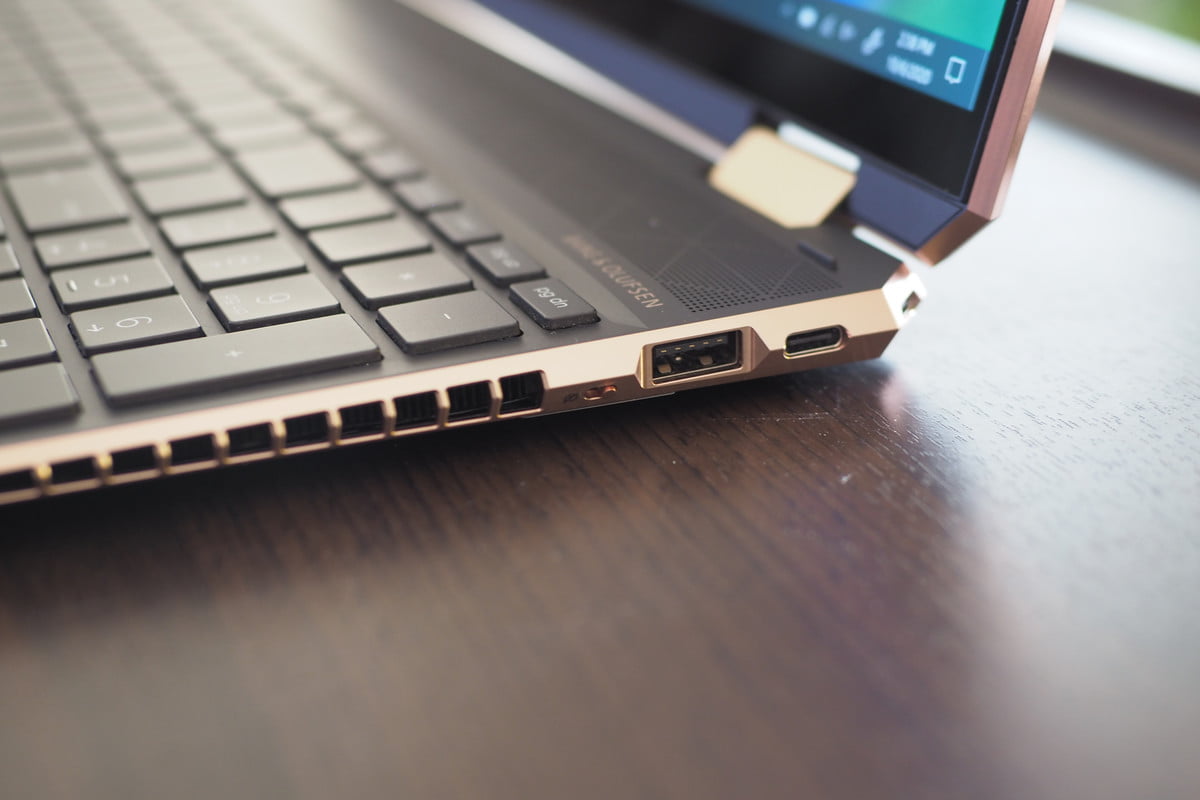
We’ll be blunt: The Spectre x360 15 is the more striking laptop. HP calls this the “gem-cut” version, and that’s for a good reason. Every edge — along the lid, the chassis, even the keyboard deck — is chiseled at angles that resemble a fine jewel. A new, more exciting Poseidon Blue color joins the more subdued Dark Ash Silver to make for a truly gorgeous design. The XPS 15 is good-looking as well, with a more conservative black, silver, and carbon fiber aesthetic that’s better suited to a conference room.
Both laptops are built around 15.6-inch displays, but the XPS 15 enjoys a 16:10 aspect ratio that’s better for productivity and a slightly higher 4K+ (3,840 x 2,400) resolution. The bezels are a closer match now that HP has reduced the Spectre x360 15’s versions to much more modern dimensions. The XPS 15 is 13.57 x 9.06 x 0.71 inches, compared to the Spectre x360 15 at 14.17 inches x 8.91 inches x 0.79 inches. The Dell is also heavier at 4.5 pounds versus 4.23 pounds. Both laptops feel equally robust.
In addition, both enjoy great keyboards with sufficient travel and precise feels — although we prefer the HP’s version for its more springy and slightly deeper mechanism. The XPS 15, though, has a much better touchpad. It’s much larger than the Spectre x360’s thanks to extra keyboard deck space due to the 16:10 display. Both touchpads support Microsoft’s vastly superior Precision Touchpad protocol.
Connectivity is strongly in HP’s favor. The Spectre x360 15 has two USB-C with 40 gigabits per second (Gbps) Thunderbolt 3 support, a single USB-A 3.1 port, and a full-size HDMI port. The XPS 15 is all-in on USB-C, with three Thunderbolt 3-enabled ports to go with a full-size SD card reader and a 3.5mm audio jack. That’s it. Both laptops support Wi-Fi 6 and Bluetooth 5.1.
The Spectre x360 15 has a more standout design and better connectivity, but the XPS 15 makes better use of its size to pack in a display with a useful 16:10 aspect ratio.
Performance

The Dell XPS 15 retakes its position as the more powerful of the two laptops. While the HP Spectre x360 15 can be equipped with the six-core 45-watt Intel 10th-gen Core i7-10750H CPU, which is fast enough for moderately demanding creative tasks, the XPS 15 can be configured with up to the eight-core 10th-gen Core i9-10885H. In addition, while the HP maxes out at 16GB of RAM, the XPS 15 can be upgraded to 64 GBs. In our CPU benchmarks, the XPS was the clear winner thanks to being equipped with the eight-core Core i7-10875H.
The same held true for gaming, where the laptops are again built around similar but not quite the same components. Both use the Nvidia GeForce GTX 1650 Ti, but HP utilizes the slower Max-Q version. As long as you’re willing to hold graphical detail to reasonable settings, then you can play most modern games on both the XPS 15 and the Spectre x360 15. However, the XPS 15 is going to be several frames per second faster in every game thanks to its faster GPU.
Their displays are another area where these laptops digress. The Spectre x360 has a very good touch- and pen-enabled 4K (3,840 x 2,160) IPS display available that offers good contrast, an average color gamut with good accuracy, and just short of our preferred 300 nits of brightness. At this time, there’s no Full HD option, but there is also an AMOLED display that’s extremely bright and has class-leading contrast and the most accurate colors you’ll find on a Windows 10 laptop.
The XPS 15, on the other hand, has a superior 4K IPS touch display (no pen support) that offers significantly better contrast than HP’s IPS version but can’t hold a candle to the Spectre’s AMOLED display, slightly wider color gamut (by a few percentage points), and excellent accuracy. It’s also brighter at over 400 nits, and there’s a Full HD option that’s also very good if you want to save on battery life.
Each of these 15-inch machines provides the kind of performance you might be looking for in a larger laptop, and both have displays that creative types crave. But the XPS 15 is simply the faster laptop, and that matters in the 15-inch class.
Portability
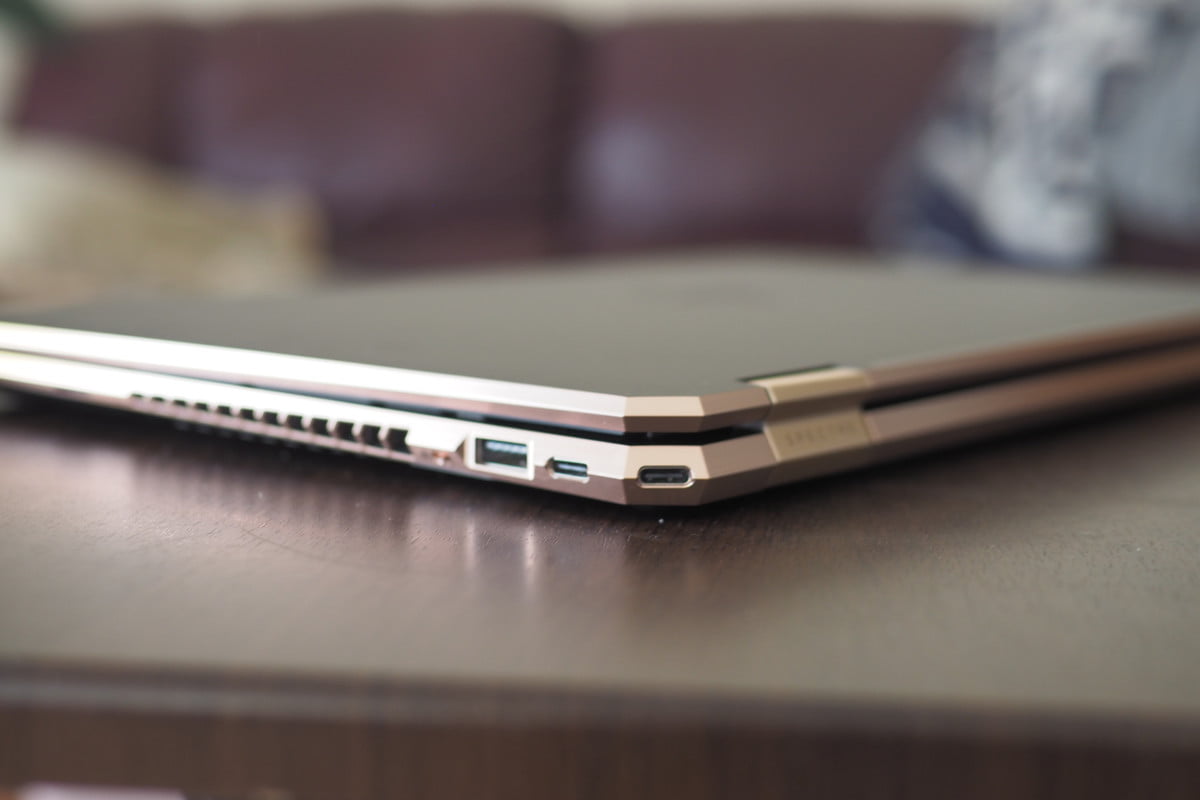
Neither of these machines is particularly light, at over four pounds. And while the XPS 15 is slightly smaller, both will take up some room in your backpack.
That makes battery life a more important consideration. Dell packed 83 watt-hours into the XPS 15 while the Spectre x360 has 82 watt-hours. However, you can buy the XPS 15 with a Full HD display, meaning that if you want more longevity, then you have that option.
In our testing, the XPS 15 lasted for about an hour longer in each of our tests — web, video, and benchmarking — thanks to the Spectre x360 15’s power-hungry AMOLED display. Neither laptop was terribly impressive, with neither making it past seven hours on any of our tests.
You can drop down in display resolution and get better battery life from the XPS 15, but neither is the most portable laptop around.
The XPS 15’s performance wins the day
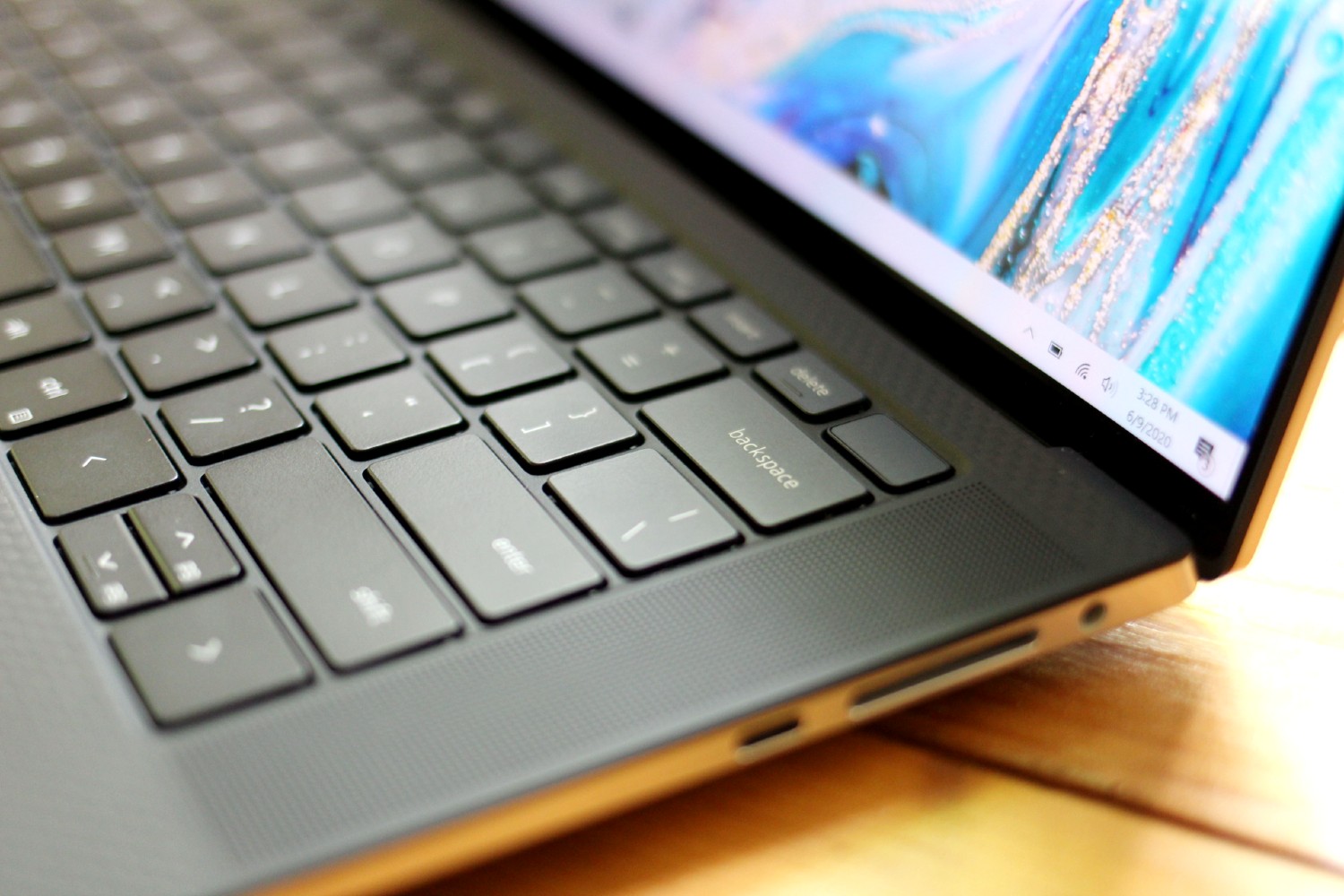
If you opt for the Spectre x360 15, the device starts at $1,730; however, you can often find this computer for about $1,280 when it’s on sale. At that price, you’ll walk away with a Core i7-10750H, 16GB of RAM, a fantastic 4K IPS display, and a 512GB PCIe solid-state drive (SSD). This device won’t be priced higher than $1,970 (or $1,520 if you’re able to catch it on sale). At that price point, you’ll get an incredible AMOLED display and a 1TB SSD.
Conversely, the Dell XPS 15 comes at a significantly lower cost than the Spectre x360 15. Its price point starts at about $1,260 and can occasionally be found for $1,199 at sale cost. When you buy the XPS 15, you walk away with a Core i5-10300H, 8GB of RAM, a 256GB SSD, and a 56 watt-hour battery. If you have more room in your budget, you can definitely opt for the upgrade at $3,494 (or $3,249 on sale). That comes with a wicked-fast Core i9-10885H, 64GB of
In our opinion, the Spectre x360 15 is a stellar computer, and it stands out among some of the fastest 2-in1s we’ve tested thus far. That said, it doesn’t outperform Dell. While the XPS 15 doesn’t feature an AMOLED screen, it does come with a stunning display and an extensive panel for users looking for a wide range of color options.
Editors' Recommendations
- Dell XPS vs. Dell Latitude: here’s how to decide
- Best Dell XPS deals: Save on Dell XPS 13, Dell XPS 15 and Dell XPS 17
- Dell vs. HP: Which laptop brand is best for your needs?
- The 5 best laptops for photo editing and photographers
- This midrange HP laptop beats the Dell XPS 15 in one important way


